One of the many times that I have flown across the Atlantic, they showed a video of Air Canada’s 75+ years of history. I decided that I would ask my mother, Aase Linaae, about her experiences as an air hostess in the 1950s - a time when jet planes, charter trips and mass tourism still didn’t exist.
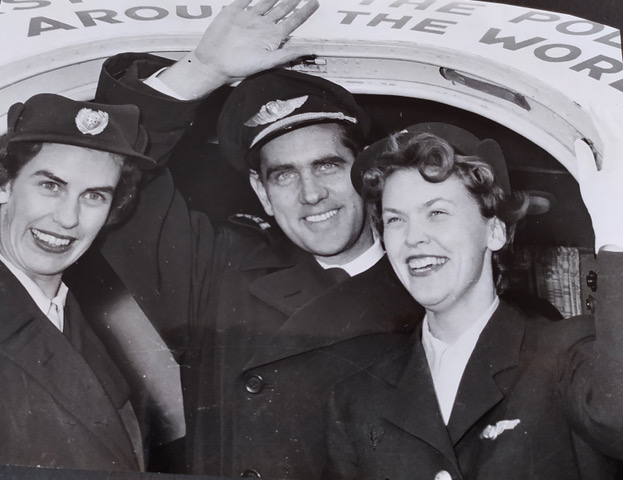
The front page of the Norwegian newspaper Aftenposten, February 1957. Aase (right) together with the Swedish captain and air hostess from the first commercial flight over the North Pole.
Aase was born in a rather conservative Norwegian town in 1930. She grew up at a time when women, or at least married women, weren’t meant to work outside the home. After completing a secretary school at a local business institute, Aase worked a year in an office in London, which was quite unusual for a girl from her town. But her desire to see the world was not satisfied. She subsequently spent a year as an au pair in France, where she met another young woman who had tried to become an air hostess for SAS. Although Aase was warned about the demanding multilingual interview, she decided to apply.
Air hostess training with diaper changes and basic flight mechanics
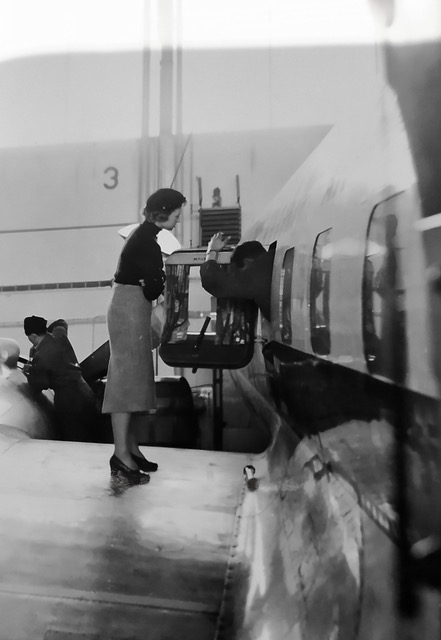
Emergency exit practice a la Houdini, Stockholm 1954. Photo © Aase Linaae
SAS, or Scandinavian Airlines Systems, a conglomerate of government-owned Swedish, Danish and Norwegian airlines, began their operations after the Second World War. When Aase applied to SAS in 1954, they had only had air hostesses for eight years. Before that, the position didn’t exist. At the beginning of Aase’s career, the names of all the Norwegian air hostesses could fit onto a single sheet of paper. Otherwise, the flight crew consisted of a captain, a first officer, a mechanic, as well as a navigator on longer hauls to for example the Middle East or the USA. The cabin crew consisted of a purser and a steward – these were also male and quite often gay, though such things were never spoken about out loud.
To fly, at least commercially, was still new and only very wealthy people and celebrities could allow themselves such a lavish luxury. The job as an air hostess was therefore the most glamourous job a young woman could wish for, other than being a movie star. It was basically every girl’s dream.

The Chef explains, air hostess course Stockholm 1954. Photo © Aase Linaae
More than 500 hopeful young women applied to SAS at the same time as Aase. All were between 23 and 28 years of age (otherwise you were considered “too old”). All had to be under a certain height (168 cm, in Aase’s recollection), and all had to weigh under 58 kilos. The applicants could also not wear glasses. Such were the prerequisites at the time, and it was all completely legal!
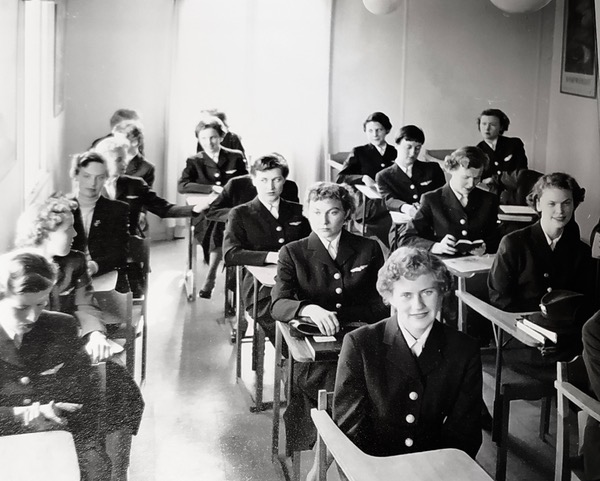
SAS air hostess course 1954. Photo © Aase Linaae
It was customary and practically expected that the air hostesses stopped working when they got married and had children. It wasn’t exactly a requirement, but just what happened. Air hostesses between the age of 30-35 were only given work in the summer when there was more air traffic. In the winter they were often put on leave or helped to retrain as ground personnel. If you had been flying for seven years in 1960 and were over 30 years old, the airline gave you severance pay. It was basically the airline's way to get the ‘ancient’ air hostesses to stop flying and end their careers when they became 30.
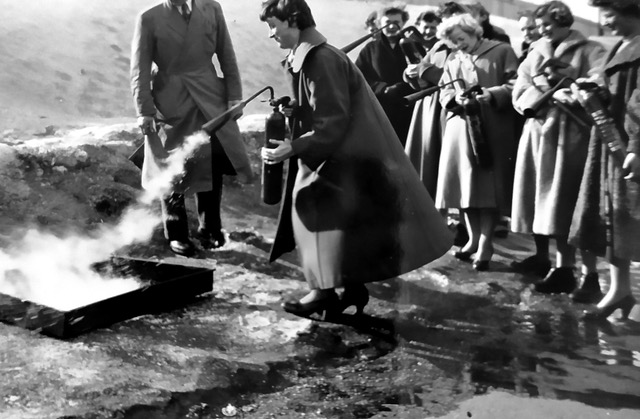
Fire extinguisher practice during air hostess training in Stockholm. Note the practical wardrobe… Photo © Aase Linaae
50 young women were called into the exam in Oslo to fill a handful of vacant positions on offer. Even with fluent English and French, Aase was terribly nervous and crammed German grammar until the last moment. “Ich bin nimmer in Deutschland gewesen” (I have never been to Germany). In her eyes, the other applicants looked much more appropriate for the role than her, but to her great surprise, she passed. Together with eleven other young women, Aase went on to a 2-month air hostess training course in Stockholm. Included in the curriculum were basic mechanics, meteorology, flight history, diaper changing and how to inject a syringe. However, they learned little to prepare them for what was to come…

Graduated SAS air hostesses, Stock holm 1954. Photo © Aase Linaae
Propeller flights, eternal turbulence and stilettoes
Just imagine working in one of those old propeller planes that could fly into the clouds, but never above them. Obviously, there was almost constant turbulence, combined with occasional gale-force winds from the North Sea. Add frequent stopovers to refuel on far too small and unwieldy airports. Throw in 30 Danish businessmen smoking cigars from take-off to landing. Put on some stiletto heels and a tight-fitting uniform and start serving three heavy trays at a time with an ample supply of genuine crystal glasses, silverware and piping hot dishes, directly from the oven. And that was only the beginning before the barf bags started to be filled …
If the air hostess needed to sit down for a few seconds, and the aeroplane was full, she would have to sneak into the cockpit with the pilots, where there was a folding seat. However, there was never time to sit down, as she was the only air hostess on board and every single passenger had to be told individually - in their preferred language - about the plane’s safety rules - because the speakers on the plane were only to be used for important announcements!
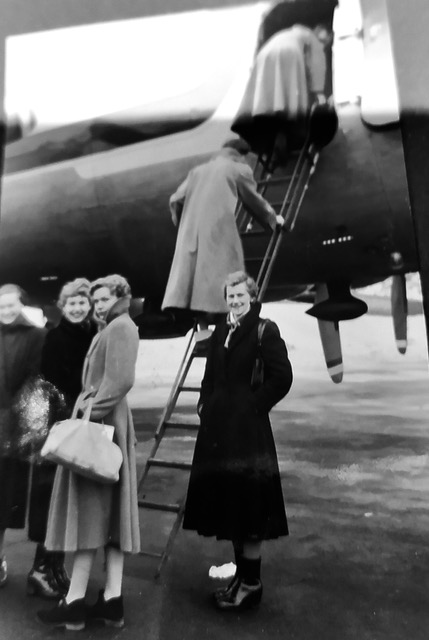
Boarding the old way. Photo © Aase Linaae
There were of course no unions for air hostesses in those days. While the cockpit crew was well paid, air hostesses earned less than the secretaries at the time. The roller trolleys that the female crew members recommended to their superiors, again and again, were only introduced as standard equipment about a decade later.
The air hostesses spent the first year flying within Scandinavia, which meant eternal fjordland turbulence with puffing Danes, arrogant Swedes, and neurotic Norwegians. From the second year with the crew, once the air hostesses had proven themselves ‘flight-worthy’, they were allowed to assist on longer flights. A flight between Oslo and Rome took the entire day and included three long stopovers in Copenhagen, Frankfurt, and Zurich. Very few people had been travelling outside their own country, not to mention to exotic destinations. Therefore, if you were lucky to work on a flight that was going to America, Africa, or the Middle East, you would have plenty of time to look around, as the return flight wouldn’t happen for several days.
Exotic destinations and long stopovers
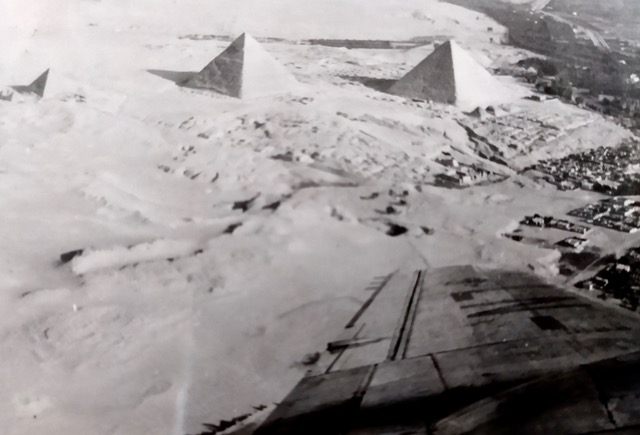
Flying over Cairo. Photo © Aase Linaae
Take a flight destined for New York. After taking off in Copenhagen, there would be an overnight stopover with a change of crew at the airport in Prestwick in Scotland. From there, they had a nine-hour haul to Gander Airport in Newfoundland, with a stopover and refuelling again before continuing another five hours to New York. There, the plane would fly back with a new crew, while the original crew had three days in the Big Apple before their return.
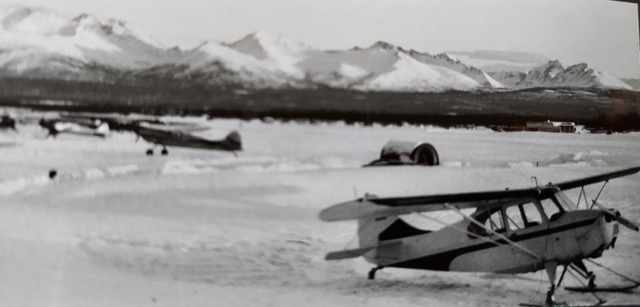
Stopover Alaska. Photo © Aase Linaae
When Aase flew to Kenya – with five stopovers and a change of aeroplane during an overnight stay in Athens – there were only flights once a week. Hence, the crew would spend seven whole days at Equator Inn in Nairobi, including per diem, paid by SAS.

Hotel where they stayed in Tokyo
Although flights over the Polar region are common today, airlines had to fly long detours to avoid the Poles before SAS created the pioneer flight route across the North Pole. In the early 1950s, Einar Sverre Pedersen (1919–2008), a former navigator from WW2, educated in little Norway in Canada, developed a Polar Path Gyro-system for SAS. This navigation system was to bring the flights safely across the Arctic Ocean. Aase was part of the crew on the inaugural flight in 1957. It was the first-ever commercial flight with a DC7 over the North Pole, which established a new SAS route between Europe and what they then considered the very Far East. As the plane passed the North Pole for the first time, they crossed paths with another SAS flight that had started from Japan. The world had suddenly gotten a bit smaller.
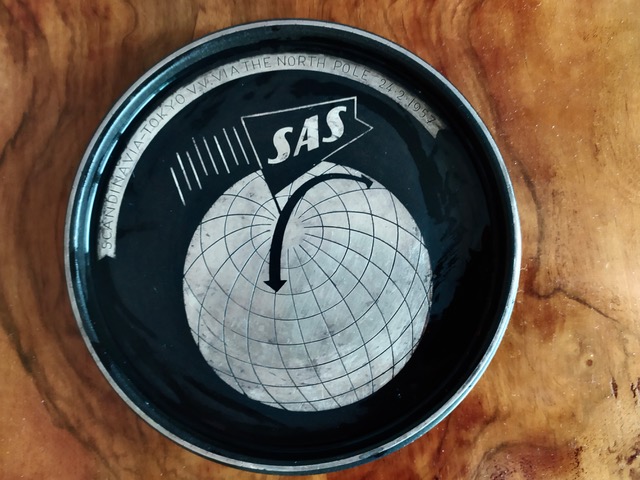
Souvenir ashtray from first commercial flight over the North Pole. Photo © Karethe Linaae
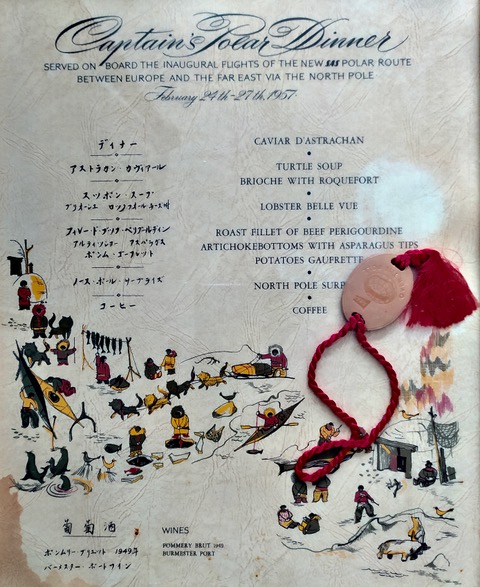
Menu for the inaugural flight over the North Pole
Flying into the Eastern Block was always a problem for the pilots, as they were only allowed to follow a narrow specially designated air corridor when they flew across communist countries. Nothing would allow the pilots to deviate from the corridor, and if they did, they would risk being shot down. The weather reports from these countries were also far from adequate. For this reason, it was only natural that they flew into a massive storm one day they were heading for Istanbul.
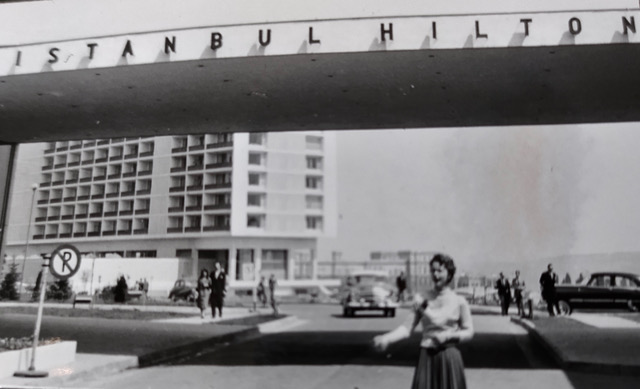
Istanbul Mid-1950s. Photo © Aase Linaae
Aase recalls that the lights went off in the cabin and both passengers and crew were shaken in the aircraft, while giant hail which sounded like machinegun shots, hit the fuselage from all sides. Everybody on board feared it was their last flight, including the pilots. After somehow landing in Istanbul, the fuselage was riddled with bumps and had to be completely overhauled. One of the pilots later told Aase that if one of the hailstones, which were large as eggs, had hit the engine, the result would have been catastrophic.
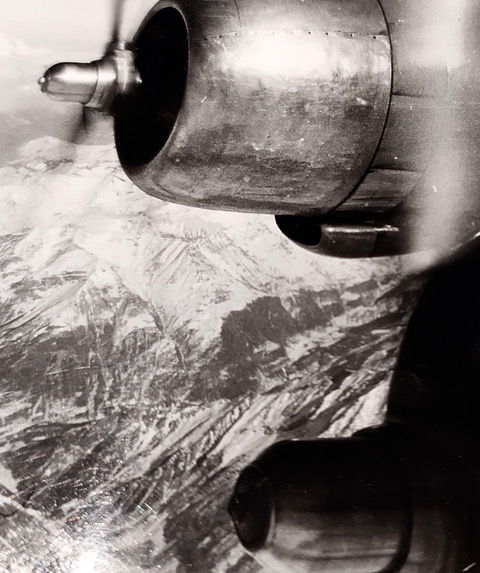
In the air anno 1950s. Photo © Aase Linaae
Aase flew for six incredible years. This was much longer than the average length of an air hostess career at the time, which was barely two years. She flew all the SAS routes and to all continents in the world, except Australia as SAS didn’t have flights there yet. During her last year on the job, Aase was stationed in a SAS flat in Rome and only flew to the Far East.

Aase in Tokyo with the Japanese SAS ground hostess during her last flight in April 1960. Photo © Aase Linaae
Her last flight as an air hostess in April 1960, took her from Asia and back to Europe. As usual, there were a few stops on the way:
Tokyo – Manila
Manila – Bangkok (overnight stopover with a change of crew)
Bangkok – Calcutta
Calcutta – Karachi (overnight stopover with a change of crew)
Karachi – Teheran
Teheran – Athens
And finally, Athens – Rome
Aase retired from SAS on the 1. of May 1960. She got married to my father 20 days later, but that is a story for another day…

When in Rome... Photo © Aase Linaae